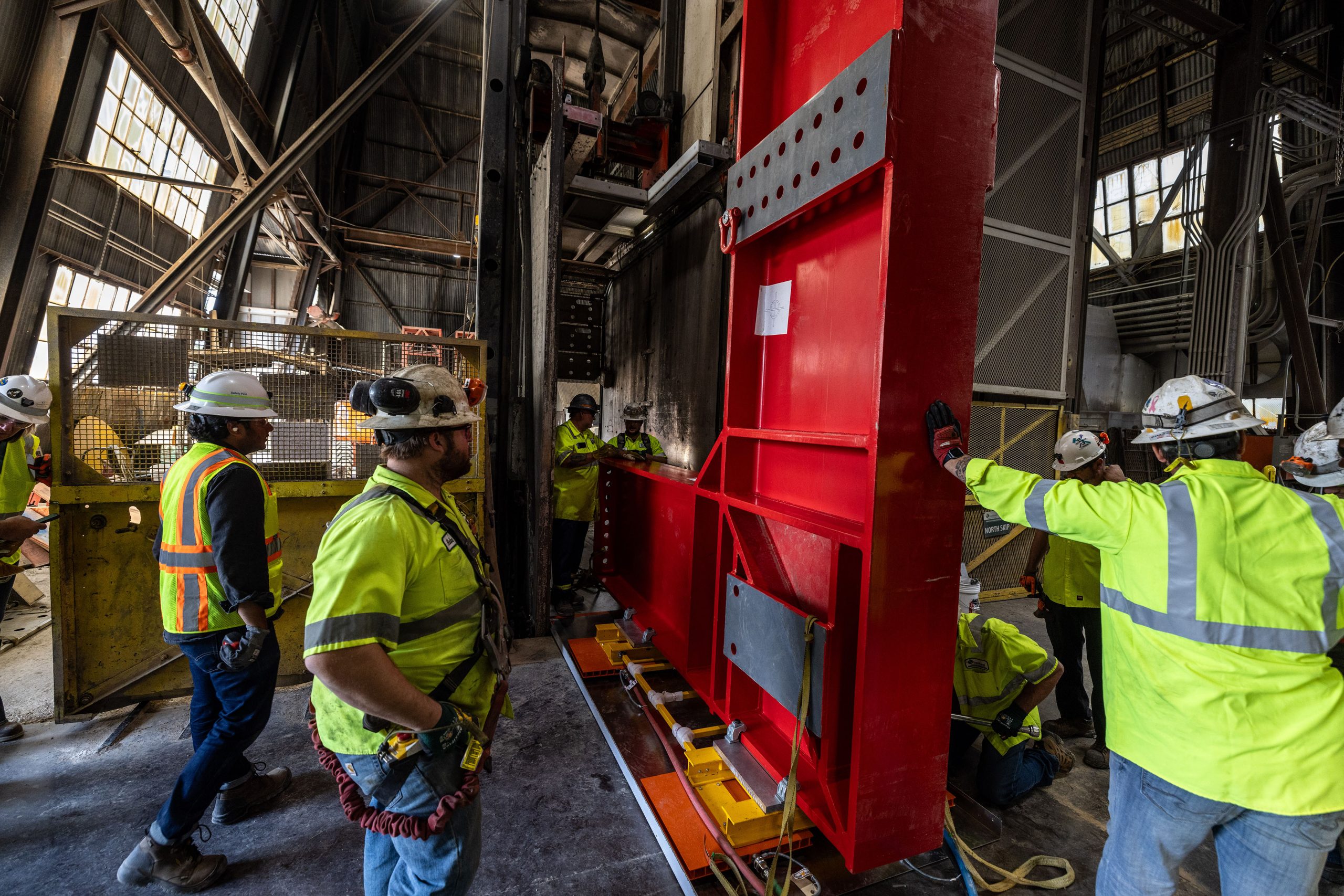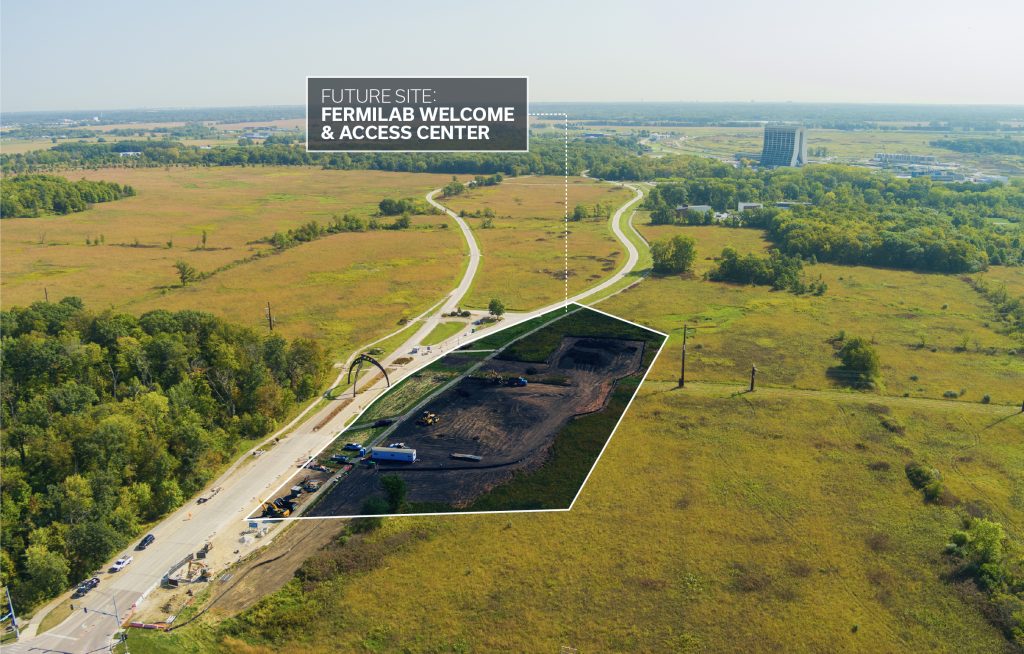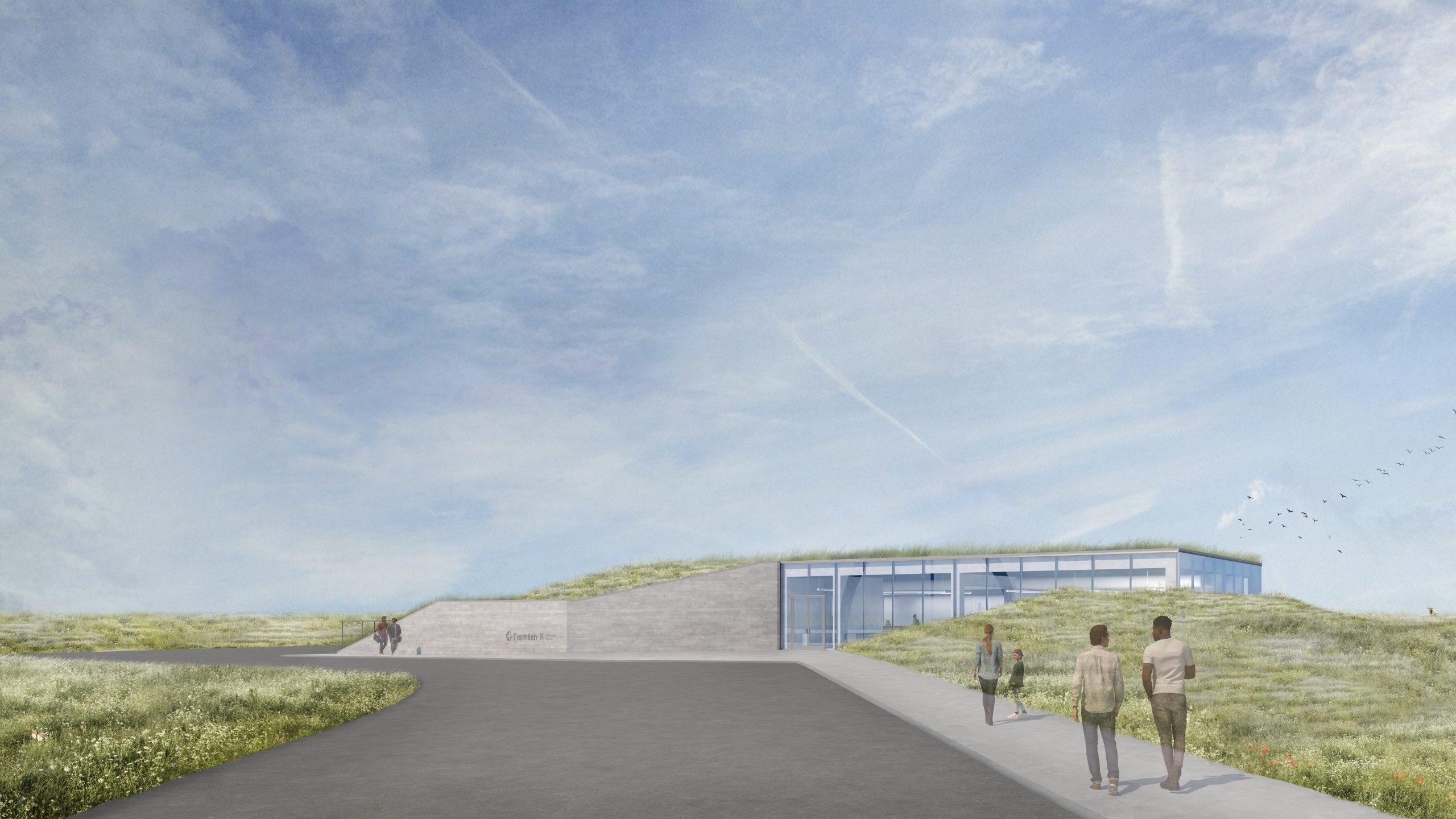Teams from Fermi National Accelerator Laboratory and Sanford Underground Research Facility have successfully completed the first test lift and lowering of a six-ton L-shaped steel beam for construction of the Deep Underground Neutrino Experiment in Lead, South Dakota.
Transporting a large, irregularly shaped steel component down a narrow mine shaft into a cavern a mile underground at SURF is not an easy task due the size and weight of the beam and the elevator-like cargo space about the size of a backyard storage shed. The successful test is a significant step forward, allowing engineers and crews to anticipate future challenges.
DUNE is an international collaboration, and the steel components are an in-kind contribution to the experiment by CERN. The initial overseas shipment of beams earlier this year is just the beginning of the 2,100 structural elements that will be delivered to SURF early next year.

Supported from above by a crane, the L-beam is carefully moved into position by the rigging team for transport down the mine shaft in Lead, South Dakota. Photo: Matthew Kapust, SURF
“Our entire team was excited to see the steel arrive in South Dakota for testing,” said Jolie Macier, far detector and cryogenics project manager with Fermilab. “I’m grateful for everyone from SURF who helped in this year-long planning process, as well as our partners from CERN. This is truly a collaborative effort.”
The first two beams, delivered in January, are part of the external structure for DUNE’s massive cryogenic vessels in the Long-Baseline Neutrino Facility. Once assembled with the other 2,500 tons of steel, they will help form a structure measuring 216 feet long, 62 feet wide and 60 feet high. After the internal insulating material is installed, the integrated structure will support and house a particle detector that will be filled with 17,000 tons of liquid argon cooled to minus 302 degrees Fahrenheit (minus 186 degrees Celsius). Scientists will use these detector modules in the quest to understand neutrinos — ghostly particles that are incredibly challenging to detect.
No surprises
Months of careful planning among the LBNF/DUNE international partners paved the way for this first success.
“We don’t want any surprises when we’re lifting heavy steel items into the shaft,” said Jeff Barthel, rigging supervisor at SURF. “You learn things when testing and this testing helped identify steps that can be taken to make this a safe and repeatable task when the time comes to lower the large numbers of cryostat components necessary for the Far Site Detectors.”
This test involved one of the many steel L-shaped beams that will form the corners of the structure. Due to their size, shape and center of gravity, the L-beams present some unique constraints. The initial L-beam lowered in this test measures about 18 feet long and 12 feet wide and weighs 12,000 pounds.
“The most critical thing for the L-beam is the tipping angle, because the tilt can’t be more than five degrees,” said Sanmitra Pingulkar, a mechanical engineer with Fermilab. “The beam had to fit within the footprint of the cage and the shaft, and crews also had to keep in mind the weight of the total load could not exceed 13,500 pounds. 90% of the weight for this particular lift was the L-beam itself.”
As the beam reached the bottom of the elevator shaft after its 100 feet-per-minute descent nearly a mile underground, crews were rewarded for their diligent planning.
“In the end the L-beam was stable and stayed within one degree. It was a success,” said Pingulkar.
“And the success of this test is thanks to a collaborative effort from everyone involved over the past year of planning,” added Charles Maupin, a mechanical engineer with SURF. “This learning experience marks the first of many pieces of cryostat steel we will transport 4,850 feet underground at SURF.
Perfecting procedures
To prepare for the test lift of a steel beam, crews at SURF first created a full-scale wooden replica of an L-beam last spring. While much lighter than the actual steel component, the shape and center of gravity of the mockup helped create a better understanding of how crews could most effectively handle the steel structures.
For the LBNF/DUNE project alone, SURF performed 350 lifts to this point. This work includes analyzing load dynamics and limitations of the rigging equipment, as well as minimizing risk for unexpected occurrences, such as the cage coming to a sudden stop in the shaft.
“You have to quantify everything,” Barthel said. “If something happens, operations could be shut down for a long time. It could have huge ramifications that cost the project months. You cannot take a chance with any of that.”
“There are a lot of people that put a lot of effort and thought into these lifts,” Barthel added. “The professionalism and teamwork shown by our crew members during the test lift was a testament to their training and skill.”
In late 2022, CERN, in collaboration with Fermilab and SURF, successfully conducted a similar test for large, fragile DUNE particle detector components known as anode plane assemblies.
International partnership
Members of CERN were onsite at SURF during the execution of the lift. Olga Beltramello, a CERN mechanical engineer, was one of the observers present at SURF for the lowering test.
“This test was an important learning opportunity,” said Beltramello. “It’s very important for CERN, not only that we check that everything works, but also that the timing of the lowering of the equipment is compatible with the rest of the installation schedule for the cryostat delivered by CERN.”
“Our partnership with CERN is an important element of the LBNF/DUNE project,” added Macier. “Their commitment to the success of this collaboration is critical and much appreciated.”
A step closer
The successful test for lowering the heavy steel components brings the international collaboration a significant step closer to the start of the DUNE detector installation. Once operational, a beam of neutrinos sent from Fermilab’s campus near Chicago will travel 800 miles through the earth to DUNE’s massive underground detectors at SURF. Scientists expect DUNE to paint a clearer picture of how neutrinos behave and transform into various states, and even provide clues for the origin of matter in the universe
More than 1,400 scientists and engineers in over 35 countries are contributing to the experiment.
Fermi National Accelerator Laboratory and Sanford Underground Research Facility are supported by the Office of Science of the U.S. Department of Energy. The Office of Science is the single largest supporter of basic research in the physical sciences in the United States and is working to address some of the most pressing challenges of our time. For more information, please visit science.energy.gov.
Sanford Underground Research Facility is operated by the South Dakota Science and Technology Authority (SDSTA) with funding from the Department of Energy’s Office of Science. We are America’s Underground Lab. Our mission is to advance world-class science and inspire learning across generations. Visit SURF at www.sanfordlab.org.
A new building at the U.S. Department of Energy’s Fermi National Accelerator Laboratory aims to improve the welcome experience while also enhancing site access, safety and security.
The Fermilab Welcome and Access Center, to be located near Fermilab’s main entrance on Pine Street in Batavia, Illinois, will host both informational and administrative functions for smoother processing and access to the site. In addition to the new access facility, the project also includes a new guardhouse and the reconfiguration of traffic routes for cars, bicyclists and pedestrians to provide easy and secure access to the campus. A new swipe-and-enter inbound lane will streamline badged employee entrance into the lab.
With proper identification presented to entrance guards, public visitors will continue to have access to public areas of Wilson Hall, see Fermilab’s herd of bison, explore hands-on exhibits and attend educational programs in the Lederman Science Center, and enjoy the laboratory’s publicly accessible bike paths and nature trails.

Fermilab is updating the main entrance to its campus in Batavia, Illinois. Illustration: Samantha Koch and Ryan Postel, Fermilab
Business visitors, new employees, users, affiliates, subcontractors and others visiting Fermilab for work will use the building for a smoother administrative process. The new location will enable Fermilab to efficiently welcome people and issue badges needed to enter Fermilab work areas.
“We are deeply committed to our culture of openness, and we are also deeply committed to the safety of our employees and visitors and to the security and stewardship of our world-class facilities, infrastructure, and data at the lab,” said Fermilab Director Lia Merminga. “We are pleased to continue to welcome visitors, and the Fermilab Welcome and Access Center represents a solid step towards making the lab a more welcoming place.”
Like other national laboratories, visitors to Fermilab need to present a Real ID-compliant form of identification, such as a Real-ID driver’s license or passport, to enter the site. The Fermilab website provides information on the lab’s site access requirements.
“With the new space, we will be able to streamline the process of bringing people into the lab and take care of the access process up front,” said Greg Stephens, chief operation officer at Fermilab. “This will make for a better experience for visitors and help us improve site safety.”
A contract has been awarded to W.E. O’Neil Construction, and on-site construction has begun. Completion of the welcome and access center is expected for the fall of 2025.
Fermi National Accelerator Laboratory is supported by the Office of Science of the U.S. Department of Energy. The Office of Science is the single largest supporter of basic research in the physical sciences in the United States and is working to address some of the most pressing challenges of our time. For more information, please visit science.energy.gov.

